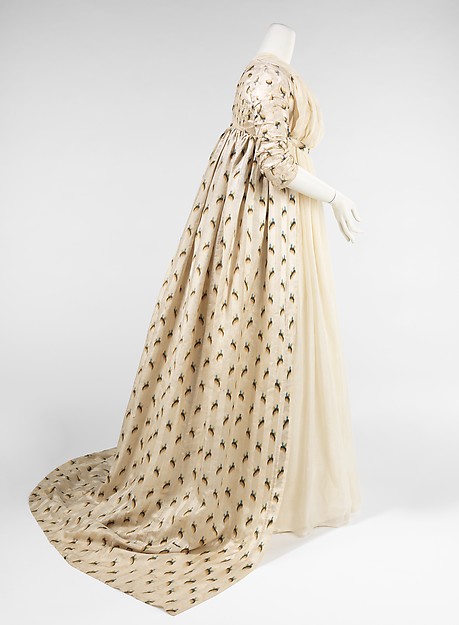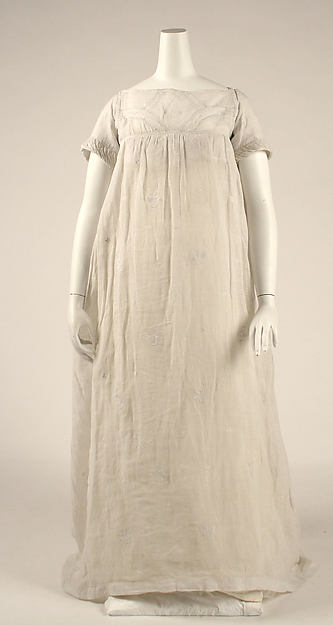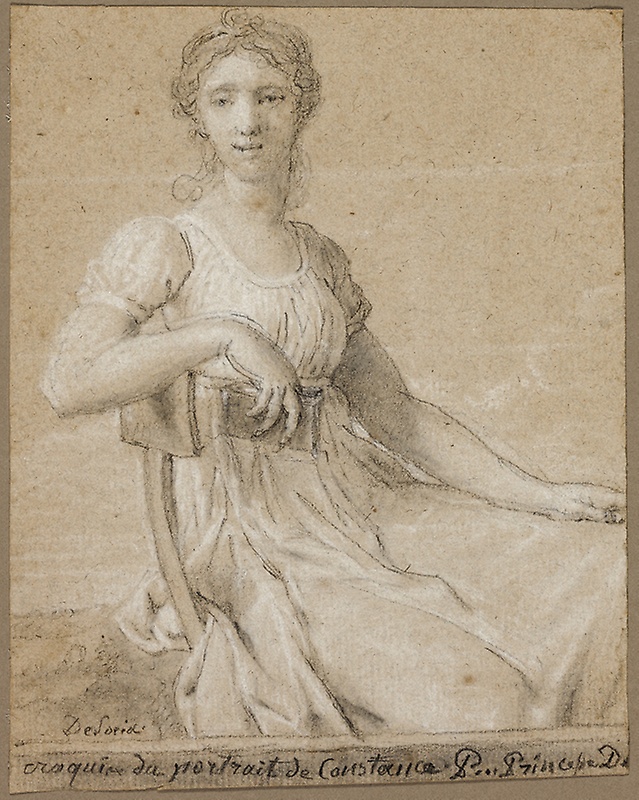Portrait of Constance Pipelet | 1797 | Jean-Baptiste-François Desoria
Portrait of Constance Pipelet by Jean-Baptiste-François Desoria
On display at the Art Institute of Chicago European Painting and Sculpture
Gallery 218
Let's jump right in and talk about that dress! Constance Pipelet is wearing an Empire Dress, a style that gained in popularity following the French Revolution and persisted until the 1820s. It is reminiscent of the chiton, a unisex style of dress popular in Ancient Greece. In modern times, the style originated as a child's dress and then was adopted for the more mature female body. The style is noted by the high waist line (which we still call an empire waist, today,) In the late 1700s most Empire Dresses had some bulk in the back created by padding. See below for more examples of Empire Dresses from The Met Museum:
The painting was completed in 1797 by Jean-Baptiste-François Desoria and purchased in 1939 by the Art Institute of Chicago. In 1960, Mr. and Mrs. Carl Weinhardt gave the Sketch of the Portrait of Constance Pipelet to the Art Institute. Jean-Baptiste-François Desoria was a portrait painter, born in 1758 in Paris. Very few of his paintings are known to remain in existance, so it is pretty special that The Art Institute of Chicago has these two related pieces.
Constance Pipelet is better known as Constance of Theis. She was born in 1767 (making her 30 years old in this painting) in western France. She was a poet and a "woman of letters" - a term given to female writers in the 17th and 18th centuries. She was married twice, first to a surgeon whom she later divorced and then to Joseph de Salm-Reiferscheiedt-Dyck, at which time she became a Countess and later Princess. She was known for writing about the intellectual achievements of women, her most well-known pieces being an opera, Sapho and her Epître aux femmes (Epistle to the Women). She also established a literary salon where she entertained writers, artists, and political figures.
If you're interested in learning more about Constance Pipelet, you might be interested in this book:










